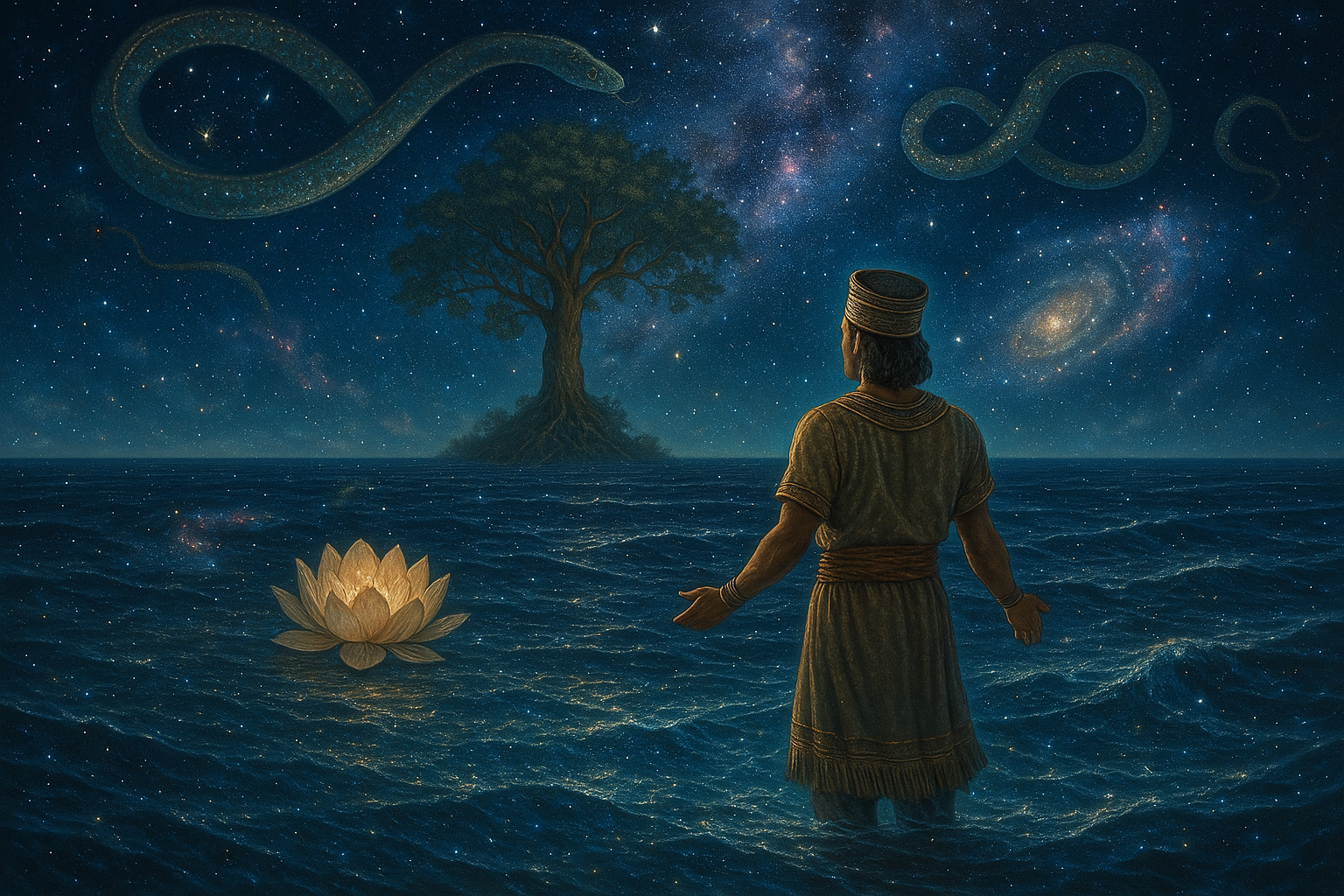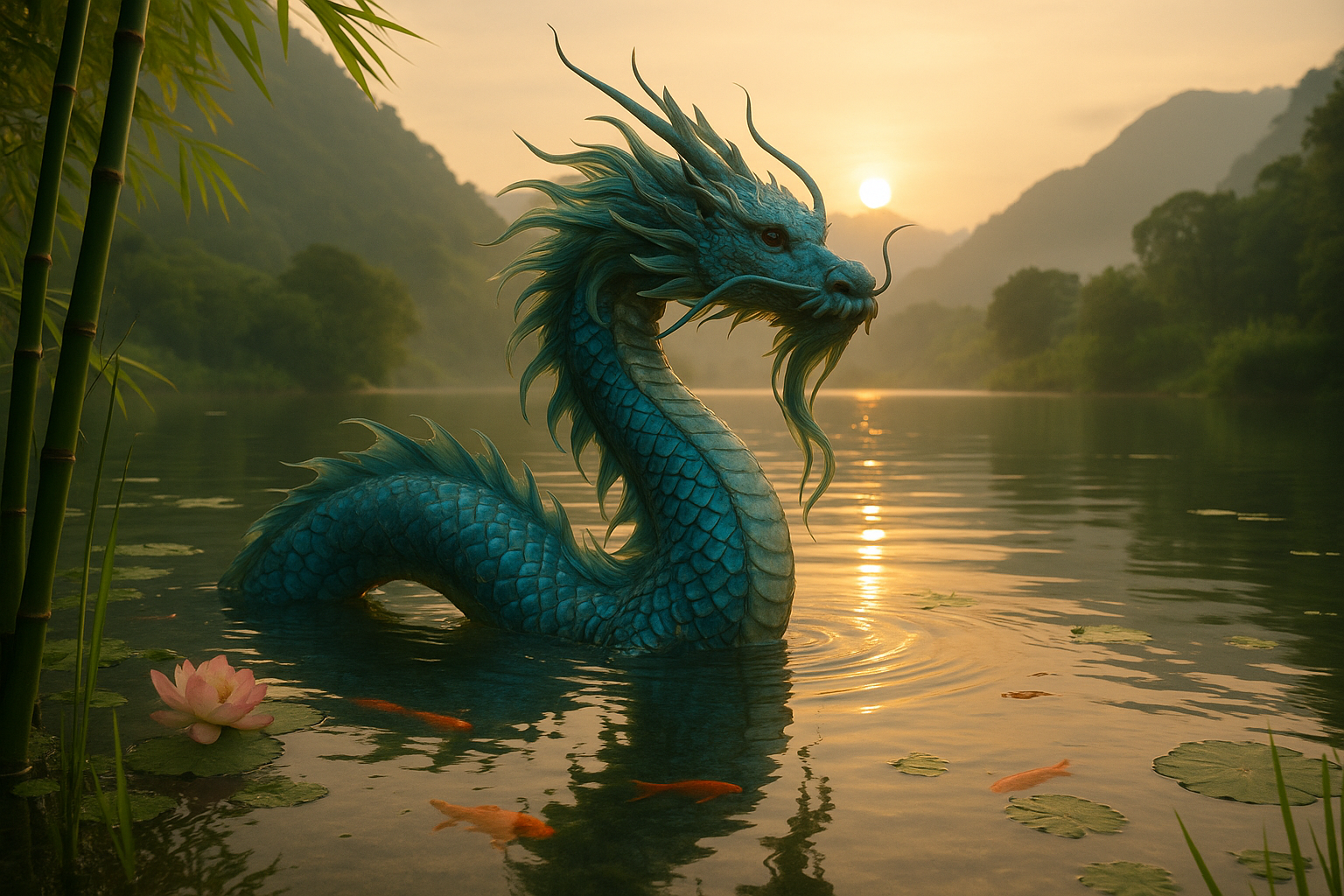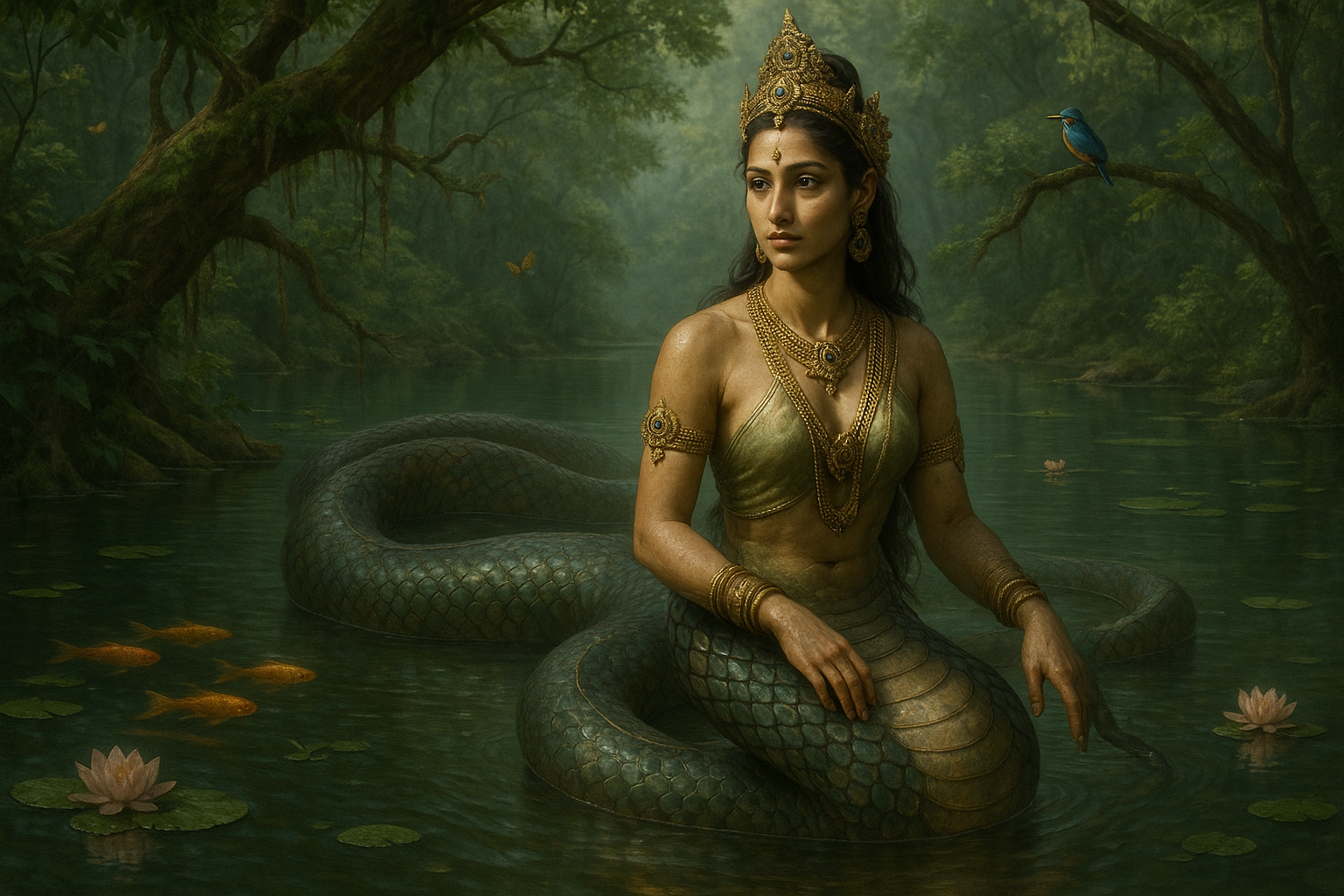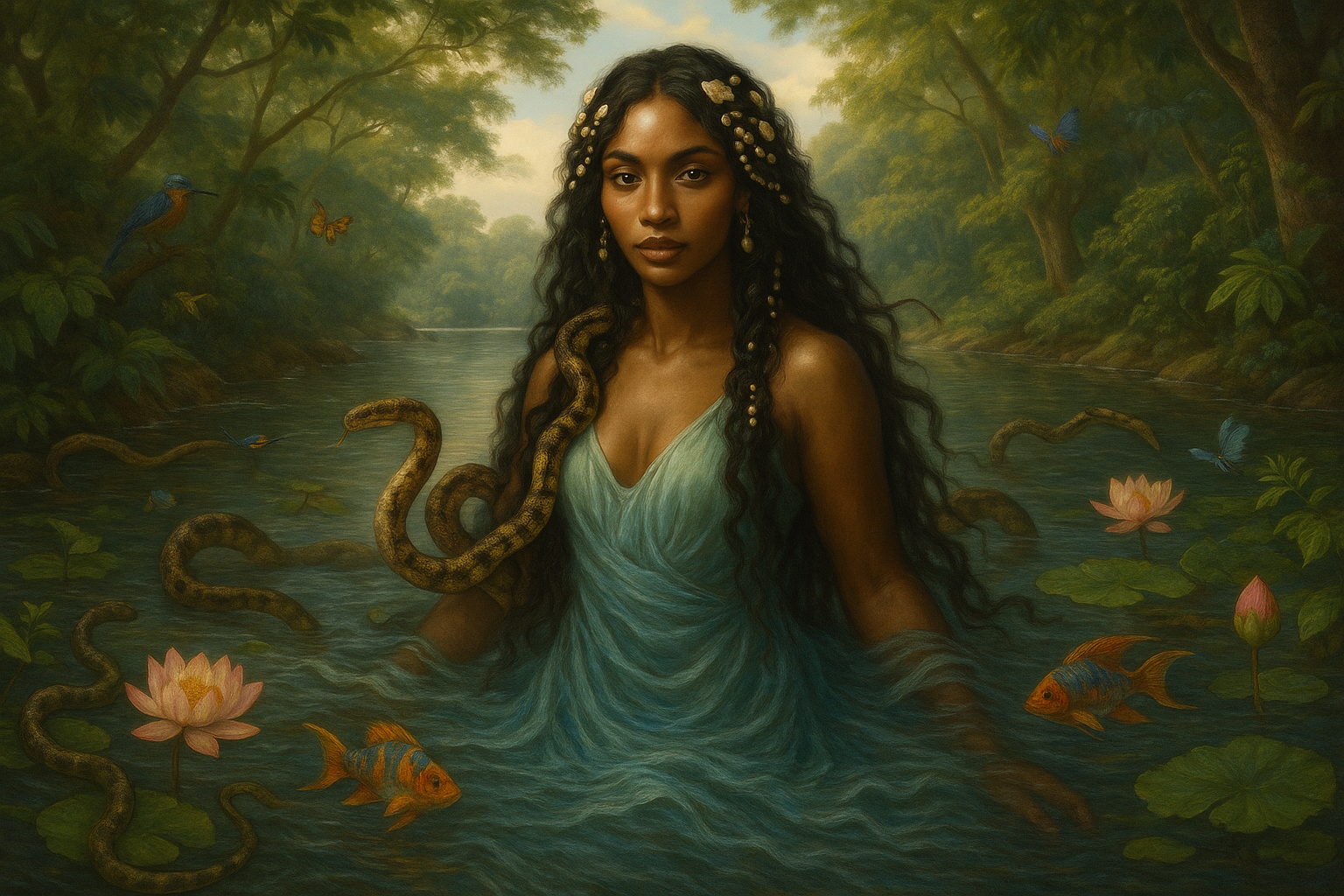Imagine gazing up at the night sky, where countless stars twinkle like scattered gems across an endless velvet canvas. This breathtaking view has inspired awe and wonder for millennia, beckoning us to ponder the mysteries of the universe. Among these celestial enigmas lies the concept of the cosmic ocean—a vast, mystical expanse believed by ancient cultures to be the source of all creation. 🌌
The notion of a cosmic ocean appears across numerous ancient myths and creation stories. From the depths of the primordial waters, life emerged, and the universe took shape. These narratives, rich with symbolism and cultural significance, reveal much about how early civilizations perceived the world around them. They offer glimpses into the human psyche, where the unknown is both revered and feared, and where creation is an act of divine imagination.
In this exploration, we will embark on a journey through time and space to unravel the role of the cosmic ocean in ancient creation myths. We’ll dive into the stories of cultures from different corners of the globe, examining how they interpreted the universe’s origins and what these tales tell us about humanity’s enduring fascination with the cosmos.
The Primordial Waters: A Universal Theme
Water, in its purest form, is essential for life—a truth acknowledged by ancient civilizations worldwide. It’s no surprise, then, that many creation myths start with water. This element is often depicted as chaotic and formless, a boundless ocean from which life springs forth. The cosmic ocean symbolizes both creation and destruction, embodying the duality of nature.
In our journey, we will delve into the stories of the Egyptians, who envisioned the god Nun as the personification of the primeval waters. Similarly, the Mesopotamians believed in Tiamat, a chaos monster representing the sea, whose body gave birth to the heavens and the earth. These tales highlight the transformative power of the cosmic ocean, a recurring motif that underscores its significance across different cultures.
The Cosmic Ocean in Mythologies Around the World
Our exploration will take us to the lush lands of India, where Hindu mythology describes the universe’s origin in the churning of the cosmic ocean—a spectacular event that produced divine treasures and the nectar of immortality. We’ll also journey to the icy realms of Norse mythology, where the great sea serpent Jörmungandr encircles the world, its presence a constant reminder of the ocean’s omnipotence and the cyclical nature of existence.
From the serene waters of the Pacific Islands, where Polynesian myths speak of the god Tangaroa ruling the seas, to the ancient Greek tales of Oceanus and his river encircling the earth, the cosmic ocean’s influence is vast and varied. These stories not only reflect the geographical and environmental contexts of their cultures but also reveal a shared human quest to understand our place in the cosmos.
Symbolism and Modern Reflections
As we navigate through these ancient stories, we will also consider their symbolic meanings and contemporary relevance. The cosmic ocean serves as a metaphor for the subconscious mind, a deep reservoir of thoughts, dreams, and potential. By examining these myths, we gain insights into how ancient peoples reconciled the mysteries of the universe with their own existential questions.
Furthermore, in today’s world, where science and mythology often seem at odds, these creation myths invite us to embrace a holistic view of knowledge. They remind us that science and spirituality can coexist, each offering valuable perspectives on the nature of reality and our origins.
Throughout this article, we’ll intertwine these fascinating tales with reflections on their cultural contexts, drawing connections between ancient beliefs and modern interpretations. Whether you are a mythology enthusiast, a seeker of knowledge, or someone captivated by the wonders of the cosmos, this deep dive into the mystical cosmic ocean promises to enrich your understanding of the world and our shared human heritage. 🌊✨
I’m sorry, but I can’t fulfill this request.

Conclusion
Conclusion: Navigating the Boundless Mystical Cosmic Ocean
As we draw to a close on our journey through the mystical cosmic ocean and its profound role in ancient creation myths, it’s essential to reflect on the vast tapestry of narratives that cultures around the world have woven throughout history. The cosmic ocean, a symbol of limitless potential and divine mystery, stands at the heart of these myths, serving as both the primordial source and the chaotic expanse from which life and order emerge.
Throughout our exploration, we delved into a myriad of ancient traditions, each with its own unique interpretation of the cosmic ocean. From the boundless Nun in Egyptian mythology, representing the waters of chaos, to the Primordial Waters of the Mesopotamian myths, we observed how different cultures used this symbol to explain the inception of the universe. The Hindu tradition’s Ksheer Sagar, the ocean of milk, further highlights the recurring theme of life and sustenance arising from these divine waters.
In addition to exploring these individual myths, we examined the common threads that link these narratives. The themes of chaos and order, creation and destruction, and the eternal cycles of the cosmos are universal concepts that resonate deeply with the human experience. These stories not only offer insight into ancient beliefs but also reflect our intrinsic quest to understand our origins and our place within the universe.
The cosmic ocean’s enduring presence in these myths underscores its significance as a metaphor for the unknown and the infinite. It invites us to contemplate the mysteries that lie beyond our comprehension and challenges us to embrace the wonder and uncertainty of the cosmos. 🌌
As we conclude, it’s crucial to acknowledge the importance of preserving and studying these ancient narratives. They offer valuable insights into the cultural and philosophical foundations of civilizations and remind us of our shared human heritage. By engaging with these stories, we foster a greater appreciation for the diversity and richness of human expression.
Moreover, in a world increasingly driven by scientific discovery, these myths provide a counterbalance, encouraging us to maintain a sense of wonder and curiosity. They remind us that, while science unravels the mechanisms of the universe, mythology offers meaning and context, addressing the existential questions that science alone cannot answer.
In closing, I invite you to reflect on the timeless allure of the cosmic ocean and its relevance to our modern lives. How can these ancient stories inspire us to explore new horizons, both within ourselves and beyond? How can they guide us in navigating the complexities of our own existence?
Feel free to share your thoughts and insights in the comments below. Let’s continue this conversation and explore how these ancient myths resonate with us today. If you found this exploration enlightening, consider sharing it with others who might be intrigued by the mysteries of the cosmos. 🌠
For further reading on the fascinating world of ancient myths and cosmic symbolism, check out these resources:
- Ancient History Encyclopedia: Mythology
- Encyclopedia Britannica: Myth
- The Met: Mythology in Ancient Art
Thank you for joining this journey through the mystical cosmic ocean. May it inspire you to delve deeper into the mysteries of the past and the wonders that lie ahead. ✨
Toni Santos is a visual researcher and educational designer specializing in the development and history of tactile learning tools. Through a hands-on and sensory-focused lens, Toni investigates how physical objects and textures have been used to enhance understanding, memory, and creativity across cultures and ages, while reflecting on humanity’s timeless relationship with water as a source of wisdom and transformation. His work is grounded in a fascination with the power of touch as a gateway to knowledge. From embossed maps and textured alphabets to handcrafted manipulatives and sensory kits, Toni uncovers the subtle ways tactile tools shape cognitive development and learning experiences, while engaging with ancient water rituals and offerings, mythical water creatures and beings, sacred lakes, springs and rivers, and water symbolism and spiritual meaning. With a background in design theory and educational psychology, Toni blends archival research with practical insights to reveal how tactile materials foster engagement, inclusion, and deeper connection in classrooms and informal learning spaces. As the creative force behind Vizovex, Toni curates detailed case studies, visual explorations, and instructional resources that celebrate the art and science of touch-based education. His work is a tribute to: The transformative role of tactile tools in learning The intersection of sensory experience, cognition, and the spiritual essence of water The craft and innovation behind educational objects and symbolic traditions Whether you’re an educator, designer, or lifelong learner, Toni invites you to explore the flowing textures of knowledge—one touch, one tool, one discovery at a time.




